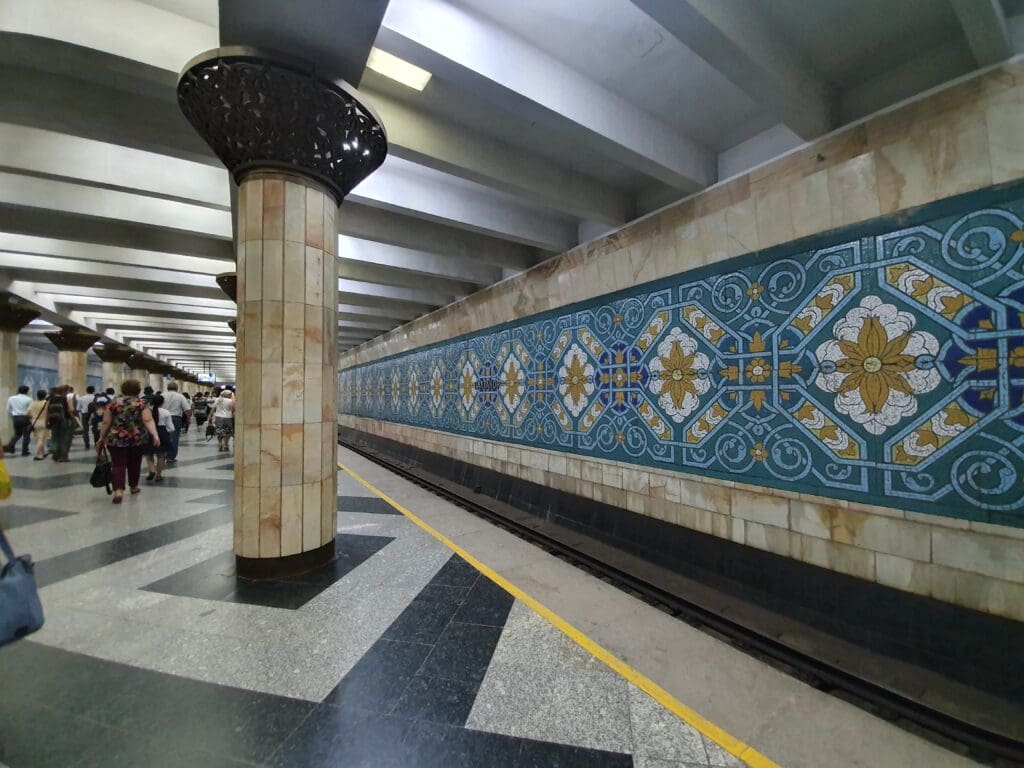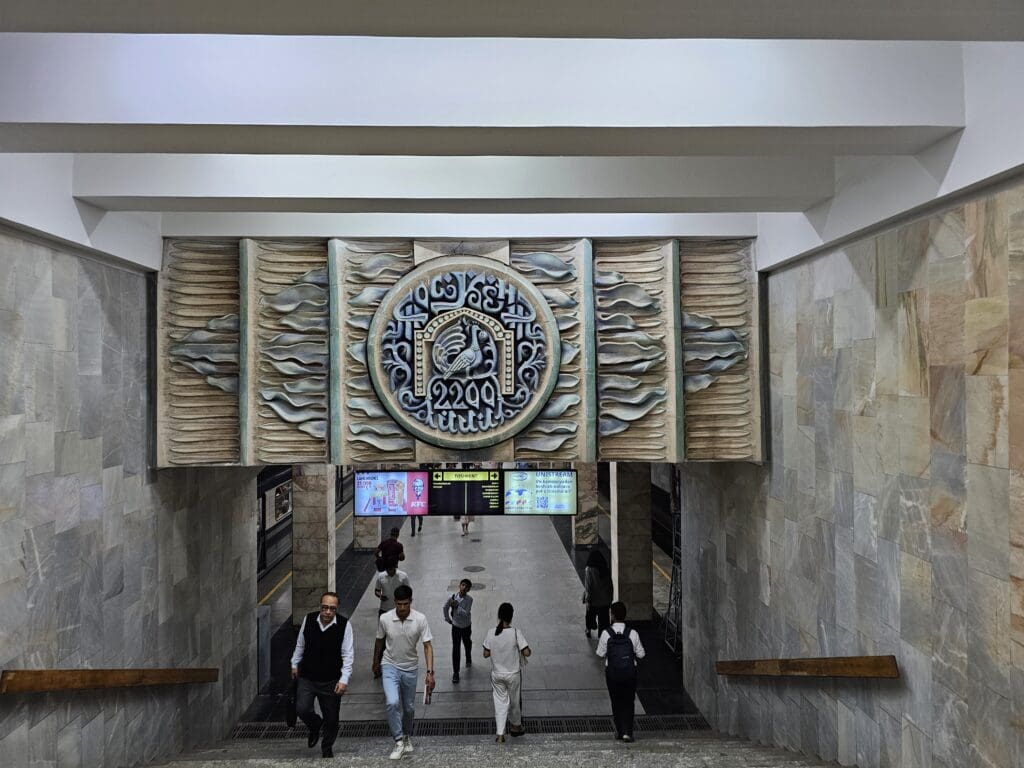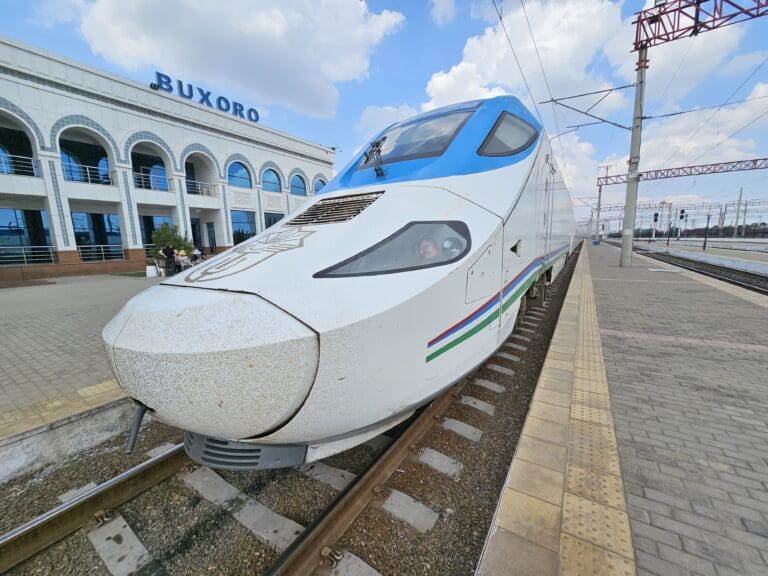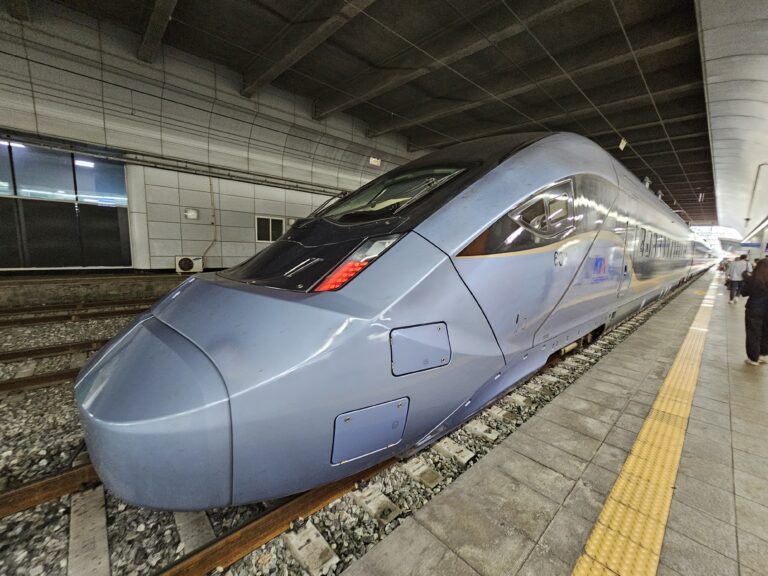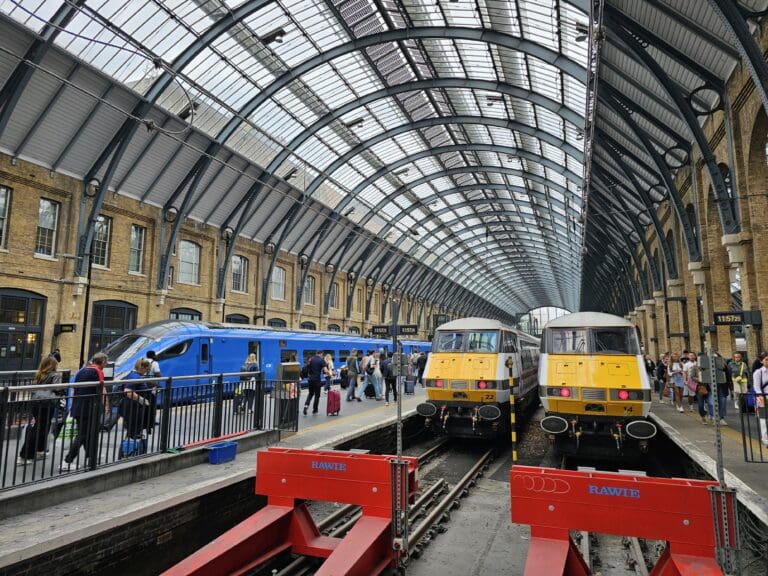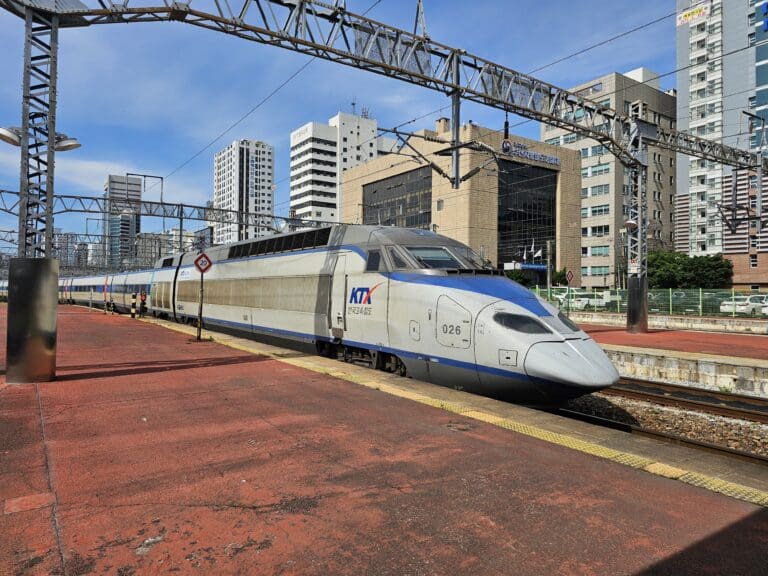A Guide to the Tashkent Metro’s Most Beautiful Stations

When visiting iconic cities like London, New York, or Tokyo, taking a ride on the local metro system is often an essential part of the experience, and in my opinion a ride on the Tashkent Metro is an must-do for anyone who happens to find themselves in the capital of Uzbekistan!
Complete with plentiful ornate stations, and an intriguing blend of modern and Soviet-era rolling stock, to a tourist, the Taskent Metro is more than just a metro system – it is a piece of architectural history that must be explored!.
A Brief History
As you stroll through Tashkent, the grey, brutalist architecture that harks back to Soviet rule is difficult to miss. These structures, typical of many former Soviet cities, were part of a large rebuilding initiative undertaken in the wake of a devestating earthquake that shook the capital in 1966. This sought to turn Tashkent into a modern Soviet Central Asian capital, and thus no such transformation would have been complete without a metro system!
Construction on the Taskent Metro commenced in 1972 and was the first such system in Central Asia, welcoming its first passengers to much fanfare in 1977. Initially, this consisted of the Chilonzor Line which connected the city’s southern suburbs to the city centre, however, it wasn’t long before the system was expanded. By 1984, the O’zbekiston Line joined the system, with further metro construction work undertaken following the fall of the Soviet Union. These saw the Yunusobod Line, which opened in 2001, followed by the Halqa Circular Line in 2020. Today, the Tashkent Metro spans over 66 kilometers and features 48 stations, and continues to be an integral part of life in Tashkent.
Today, the Tashkent Metro operates a mixture of old and noisy Soviet-era 81-717/714 class trains which first hit the rails in the 1970s. These units were once the backbone of metro systems across the Soviet Union, and their presence in Tashkent adds an authentic, nostalgic feel to many rides. In more recent years, these have been joined by much more modern units which will eventually replace these older, arguably more characterful, types!
No Photography!
For much of the Tashkent Metro’s history, photography was banned across the network, with this justified by stations’ dual-roles as shelters in the event of a civil emgency. However, recognition that these sites failed to contain any particularly secretive information, and the advent of smartphones, adding a layer of complications to policing such a ban, meant that such restrictions were lifted around 2018, giving railway enthusiasts and tourists the opportunity to capture the unique beauty of Tashkent’s metro stations. Whilst not being particularly open about photographs, and taking these with a smartphone as opposed to a proper camera, I faced absolutely no issue during my visits to stations across the Tashkent Metro network.
Below, I detail some must visit stations across the network!
Kosmonavtlar
Opened in 1984 with the O’zbekiston Line, Kosmonavtlar is one of the most visually striking stations on the Tashkent Metro. As the name suggests, this station is dedicated to cosmonauts and early astronomers. The tiles on the walls transition from white to deep blue, symbolizing the layers of the atmosphere, while medallions of famous cosmonauts like Yuri Gagarin, Valentina Tereshkova, and Central Asian cosmonaut Vladimir Dzhanibekov add to the station’s space theme. This station is a true testament to the Soviet space race.
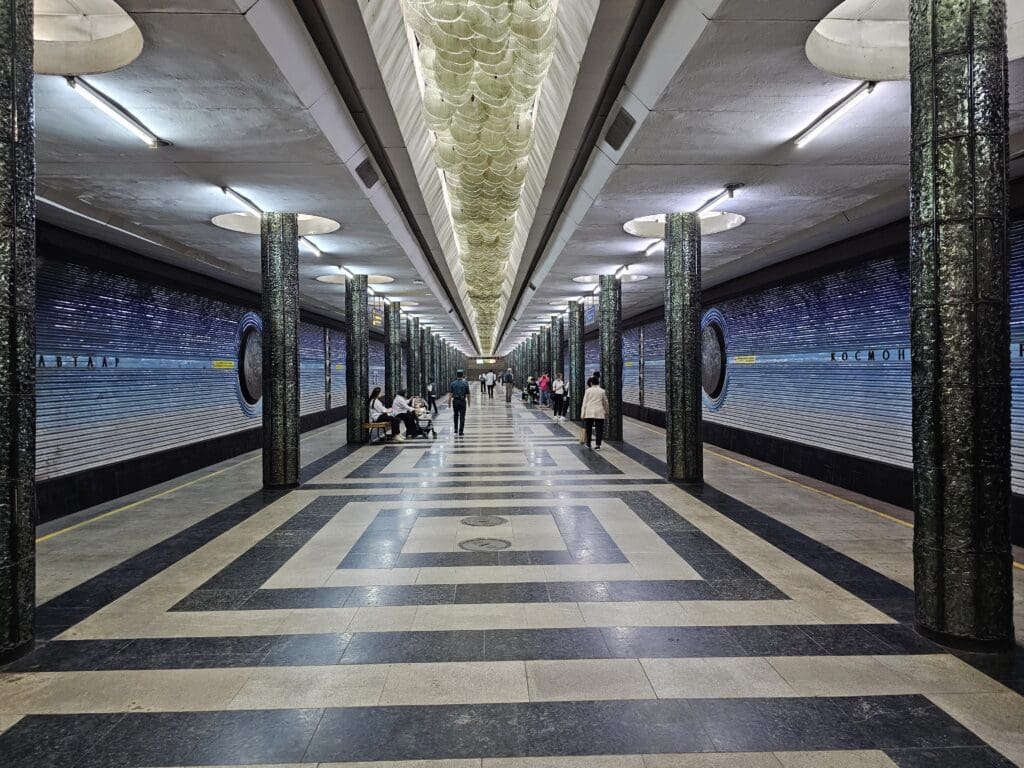
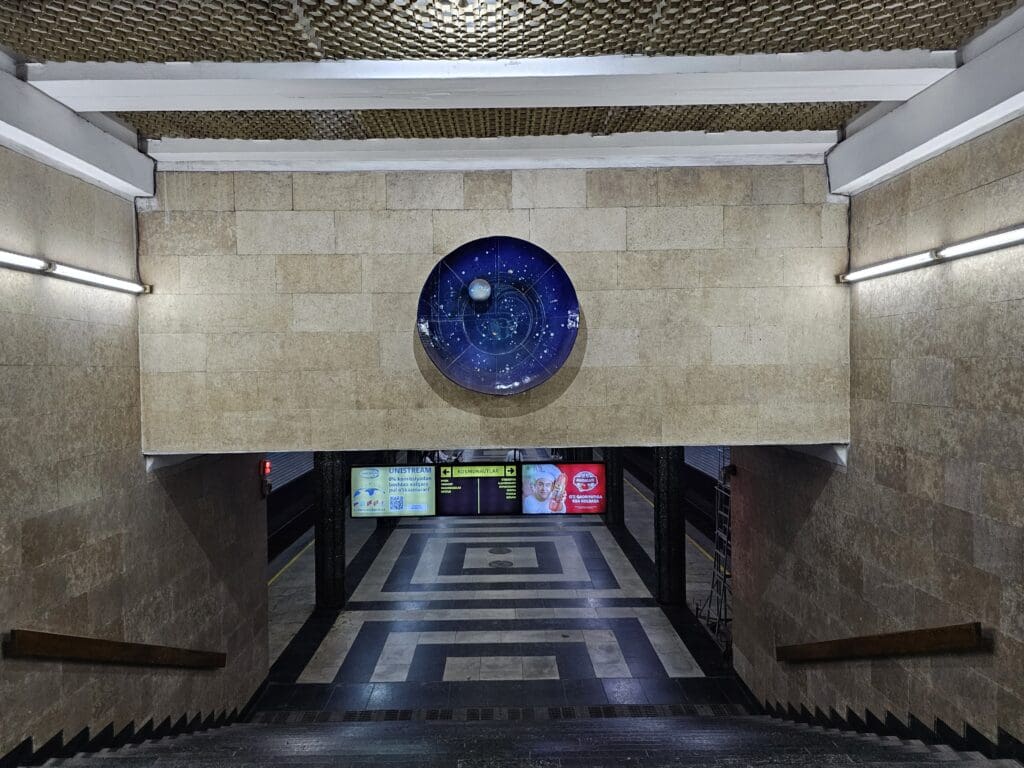
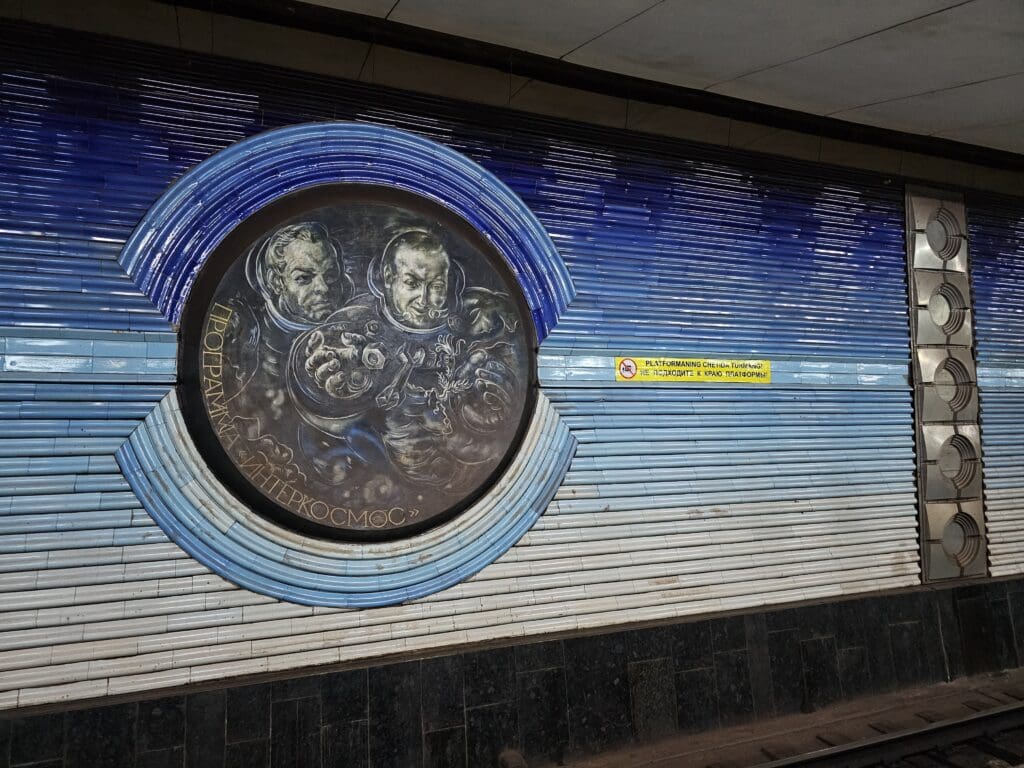

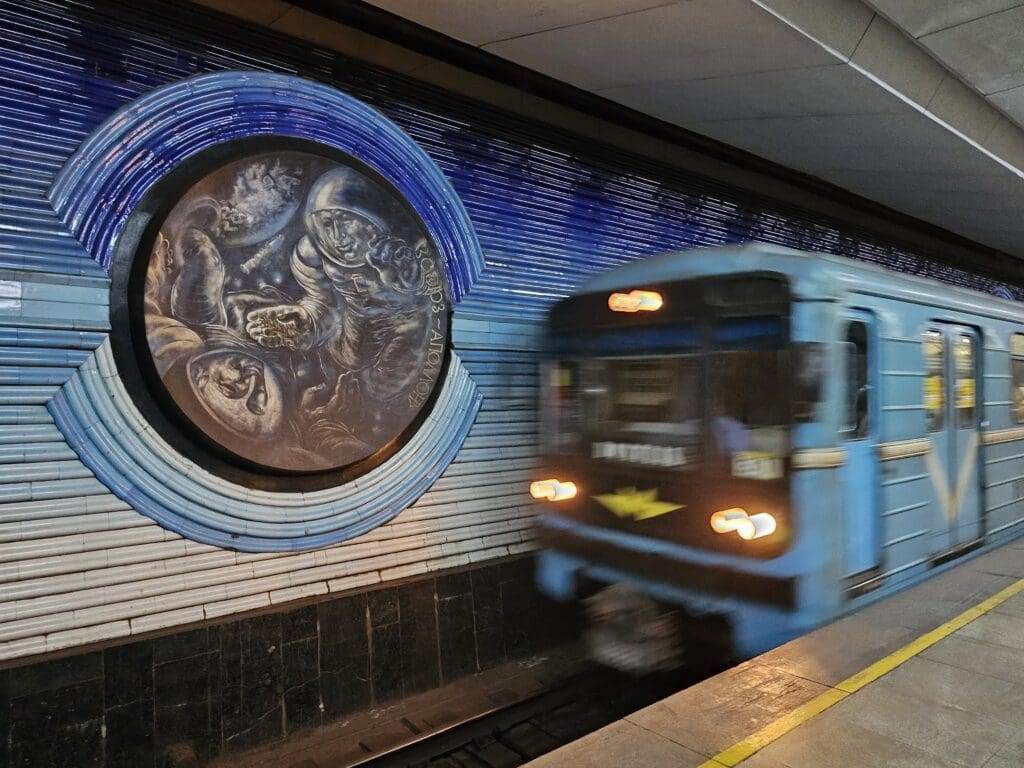
O’zbekiston
Just one stop from Kosmonavtlar, O’zbekiston Station may be less ornate but is still a beautiful example of the metro’s design. The station features grand lamps shaped like cotton buds, a nod to Uzbekistan’s cotton industry, as well as art-deco-inspired tile work. The station also proudly displays the state emblem of Uzbekistan, making it a perfect blend of functionality and national pride.
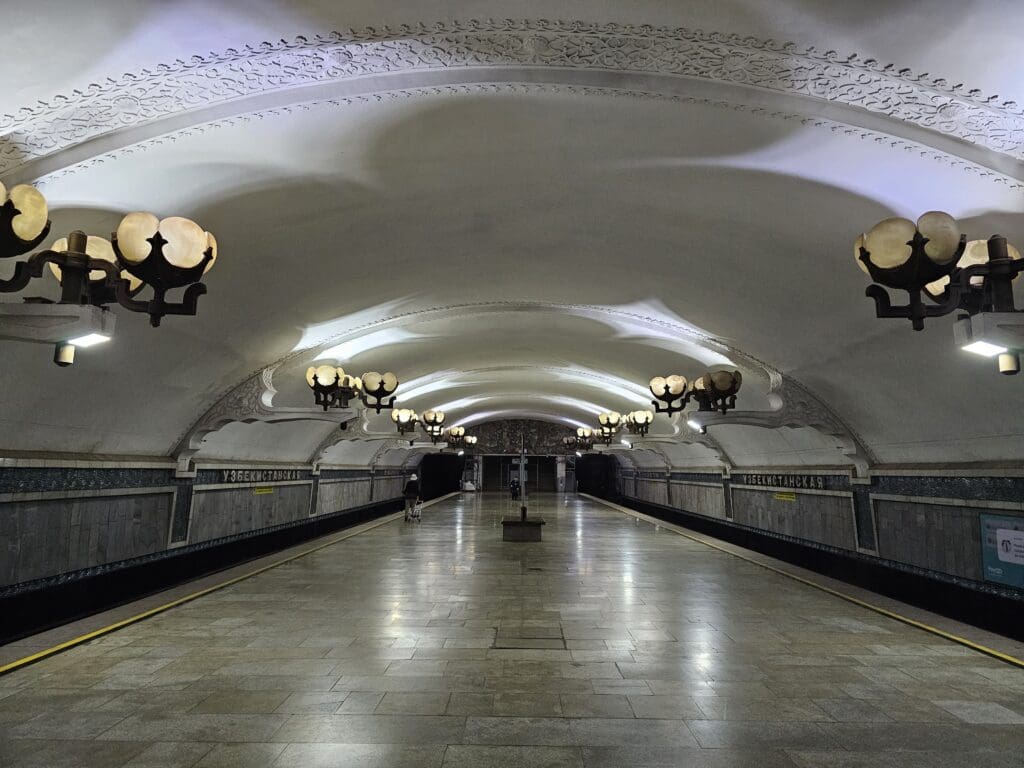
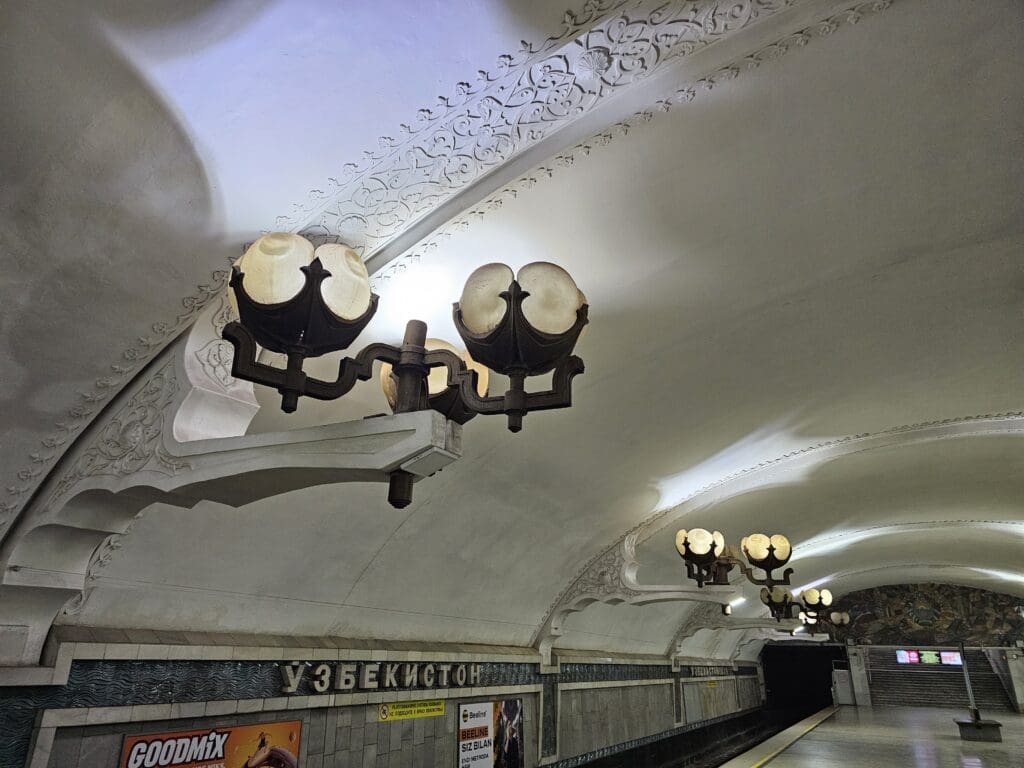
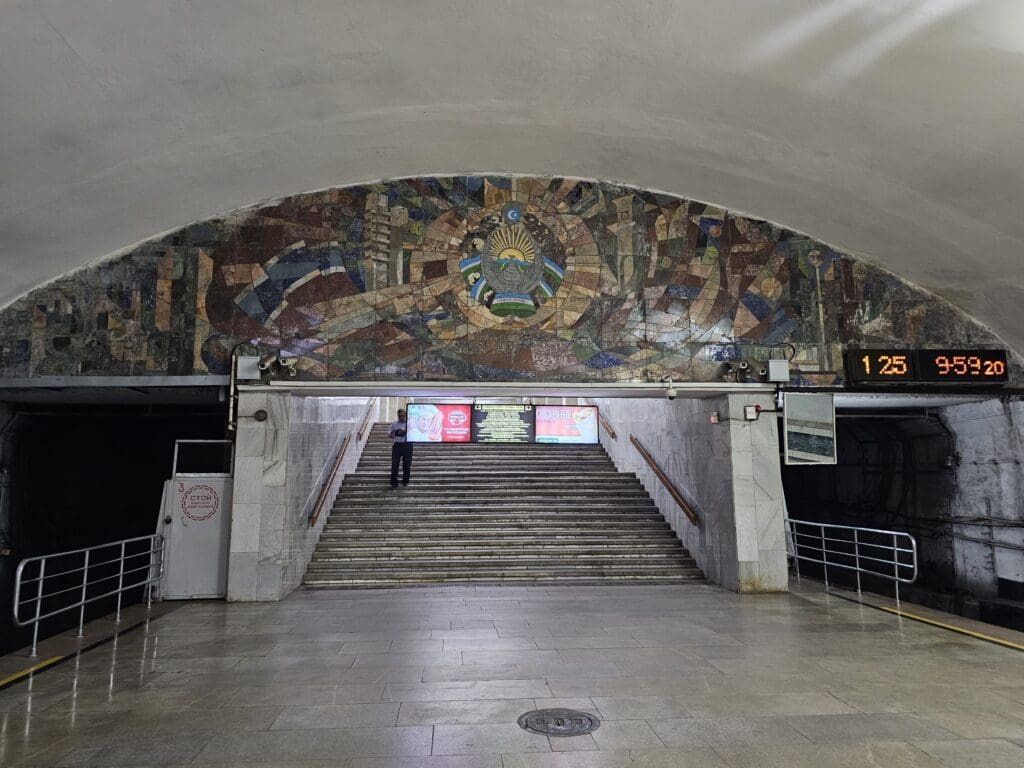
Alisher Navoiy
One of the most famous stations in Tashkent, Alisher Navoiy is named after the renowned poet and statesman from the Timurid Empire. The station’s grand domes and traditional ceramic motifs celebrate Navoiy’s literary and cultural contributions. The station’s design is rich with historical significance, making it a must-visit for history lovers and architecture enthusiasts alike.

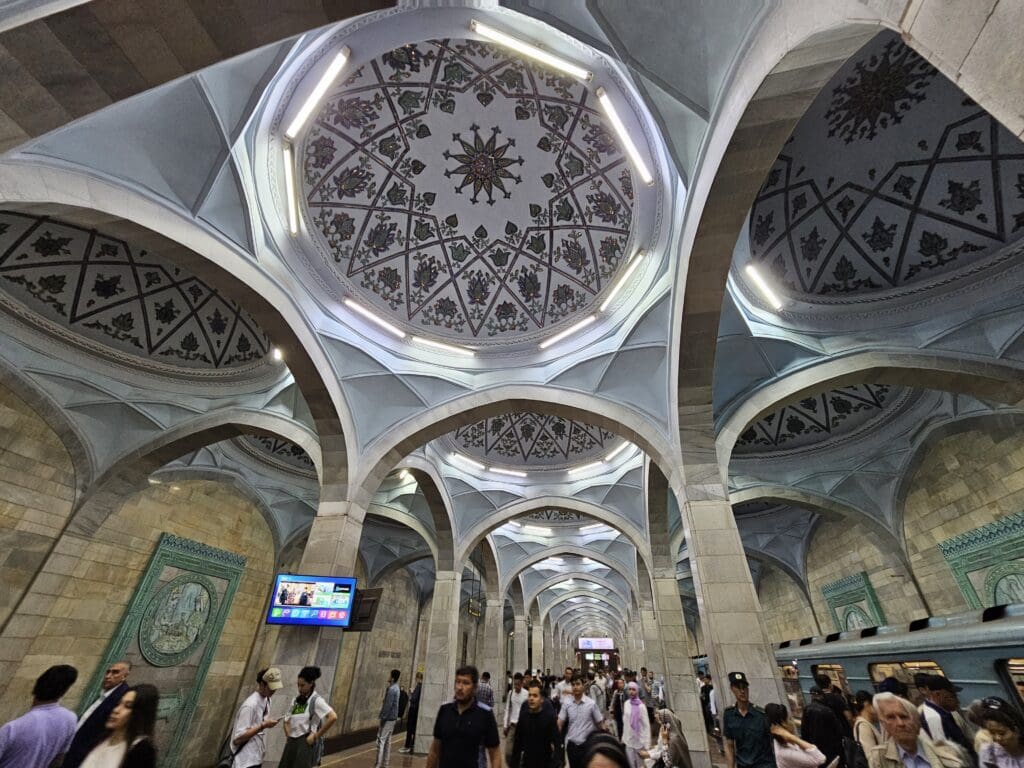

Galuf Gulom
Located on the O’zbekiston Line and opened in 1989, Galuf Gulom Station is named after the celebrated Uzbek poet and writer. The station is designed with a lavish mix of marble and granite ceramics, and its murals celebrate Gulom’s literary achievements. It’s a beautiful tribute to a modern literary hero in Uzbekistan.
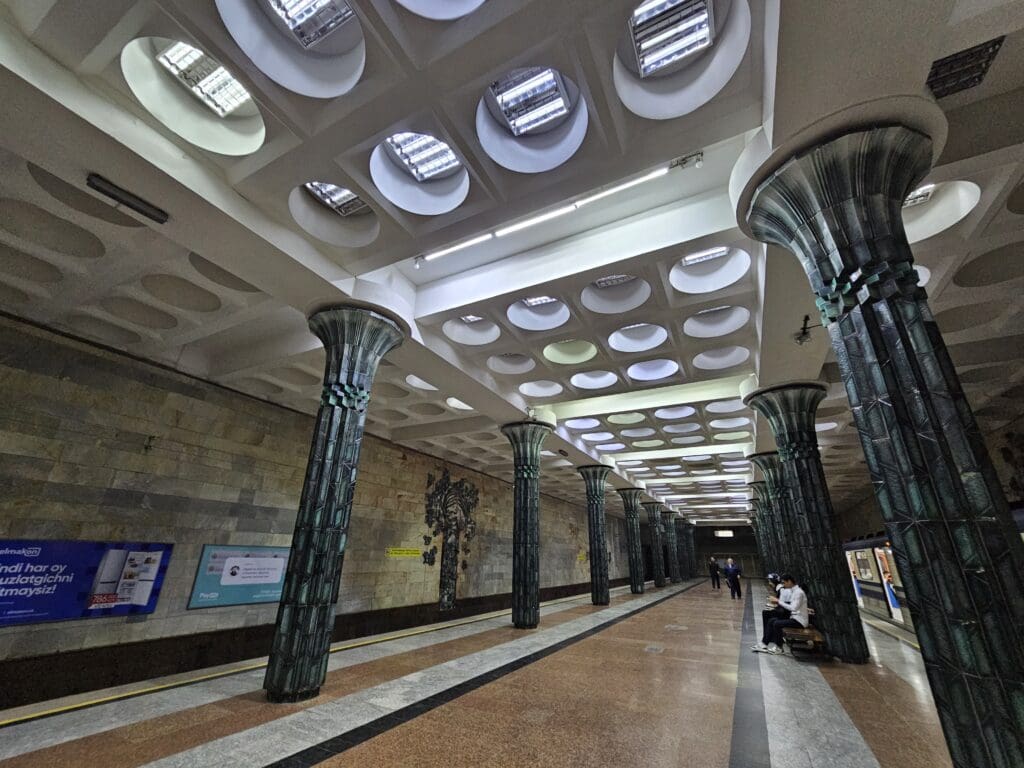
Chorsu
Serving the famous Chorsu Bazaar, Chorsu Station is a popular stop for both locals and tourists. Opened in 1989, this station is decorated with marble walls and ceramic motifs that celebrate the nearby market, the largest in Uzbekistan. It’s not as ornate as some of the other stations, but it’s still worth visiting for its vibrant atmosphere and proximity to one of Tashkent’s must-see spots.

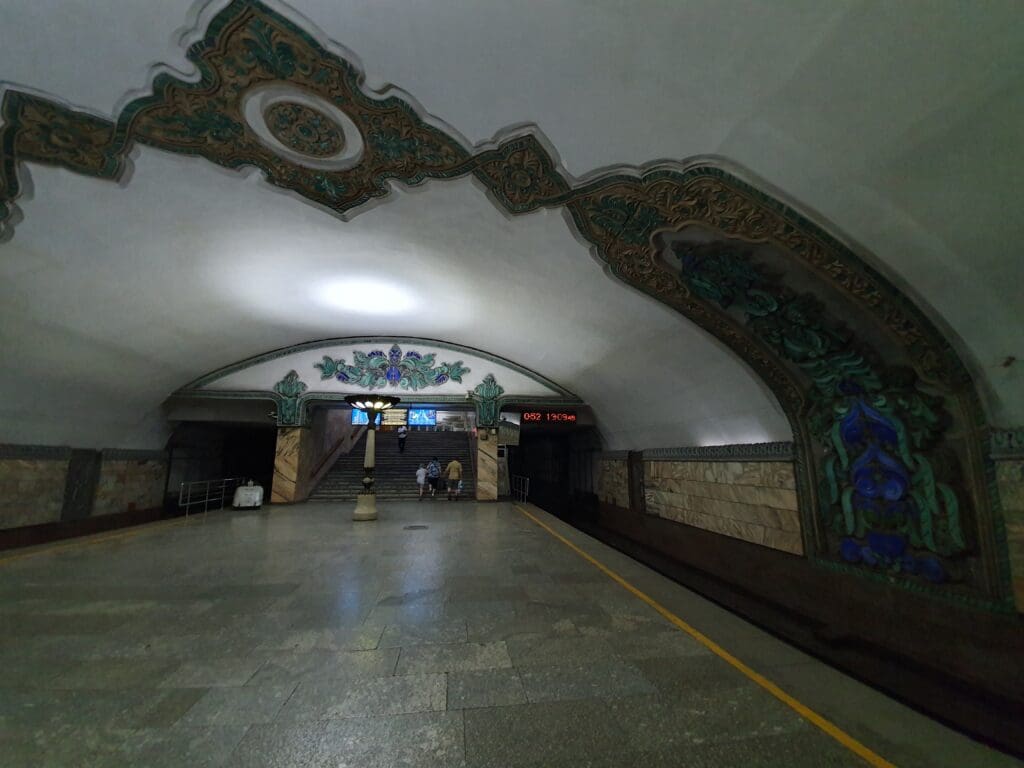
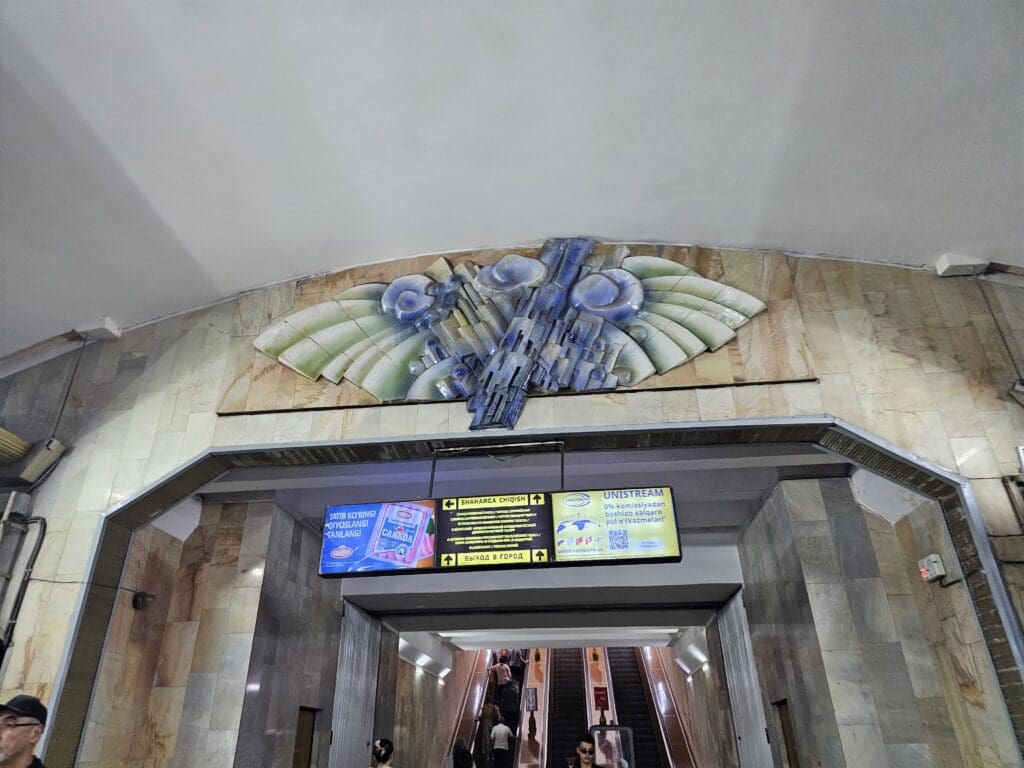
Yunus Rajabiy
Named after the famous Uzbek author and musician Yunus Rajabiy, this station is located on the Yunusobod Line and opened in 2001. The station’s lavish interior, featuring chandeliers, marble flooring, and ornate columns, blends both modern and historical design influences. It’s a visual feast and a perfect example of the metro’s rich architectural diversity.
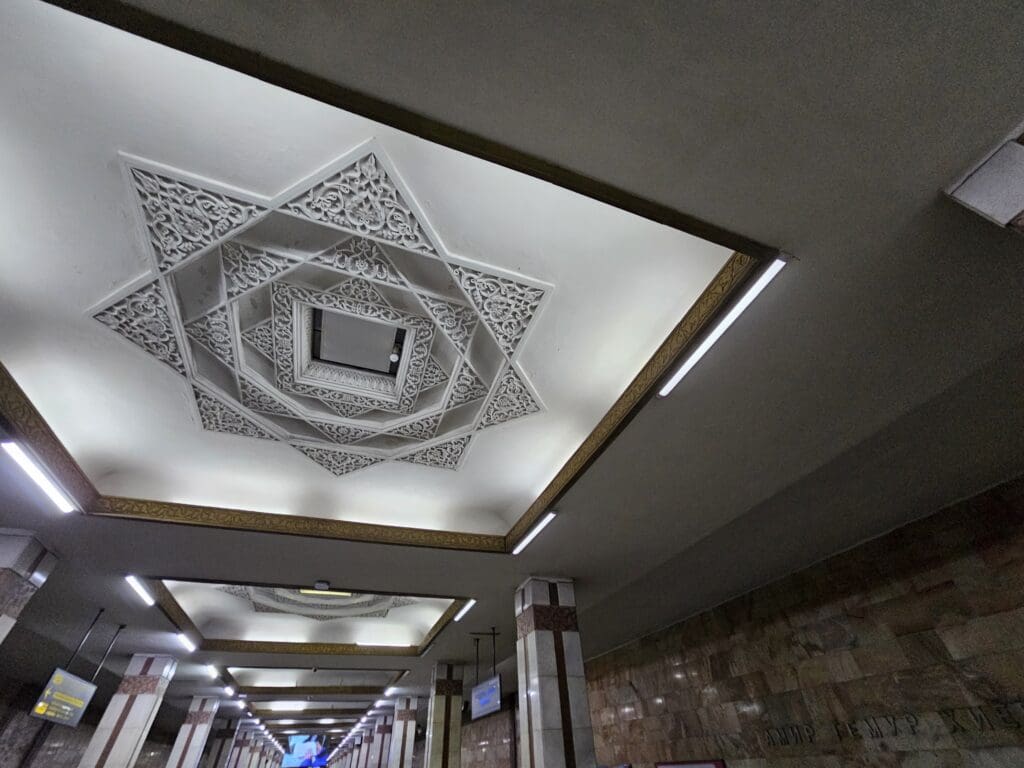
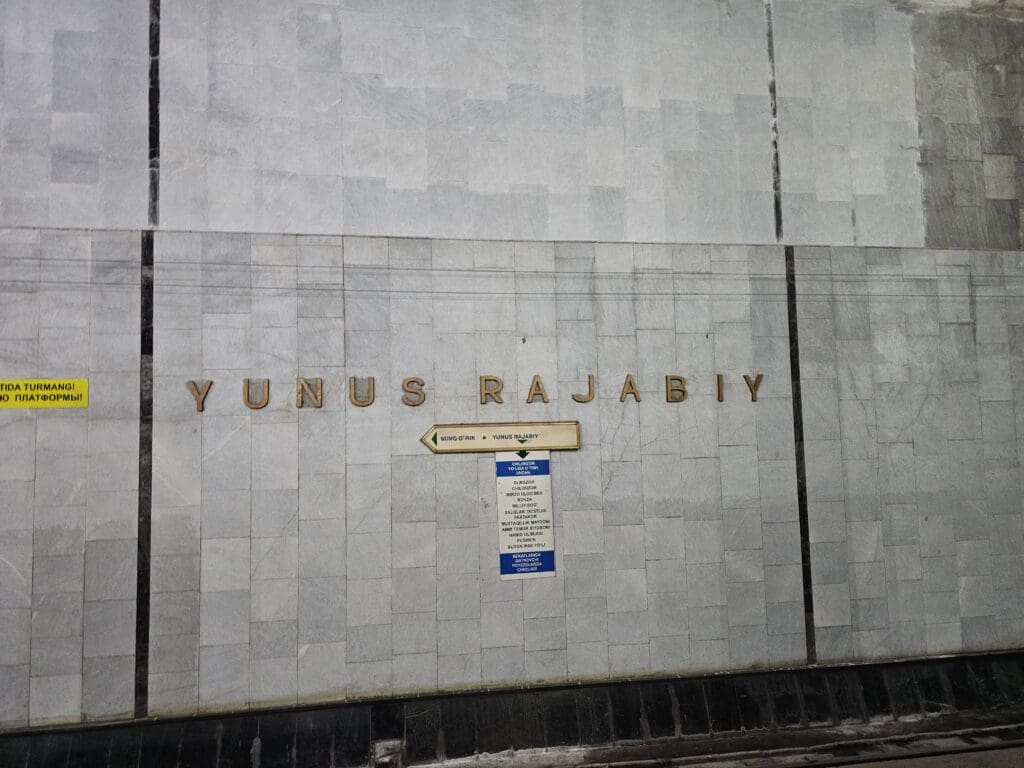
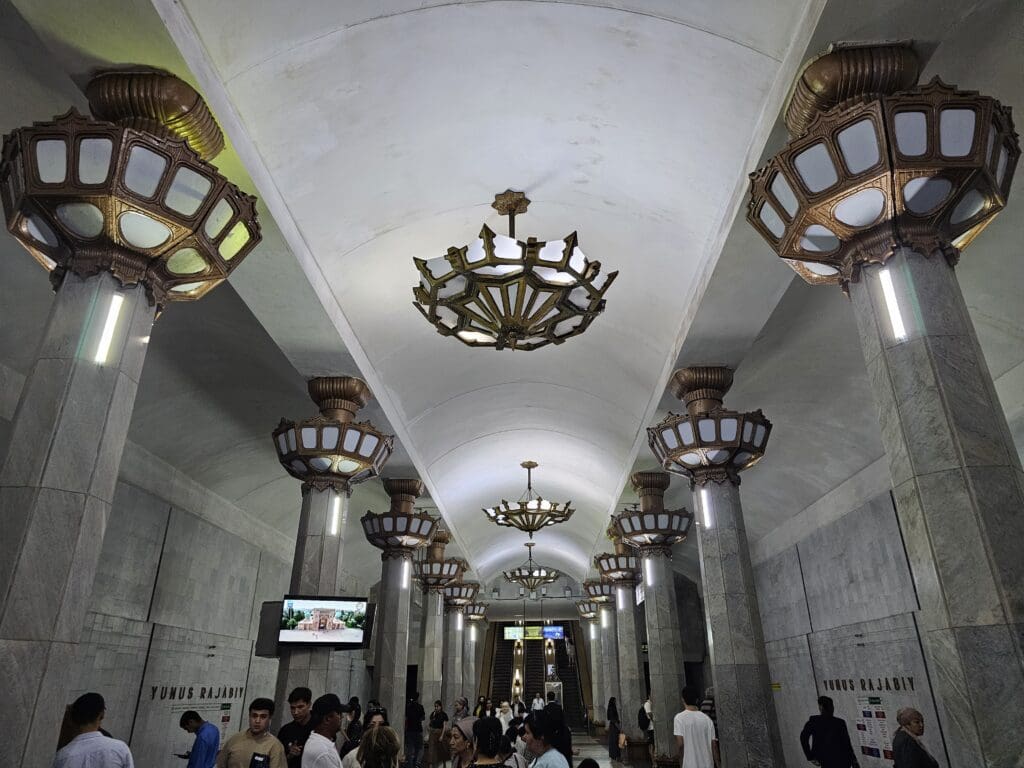
Oybek
One of the busiest stations on the O’zbekiston Line, Oybek opened in 1984 and is named after the famous Uzbek poet Musa Tashmukhamedov, whose pen name was Oybek. The station’s design features columns clad in marble and intricate panels that depict themes from Oybek’s literary works. The design truly reflects the cultural significance of the poet’s contributions.
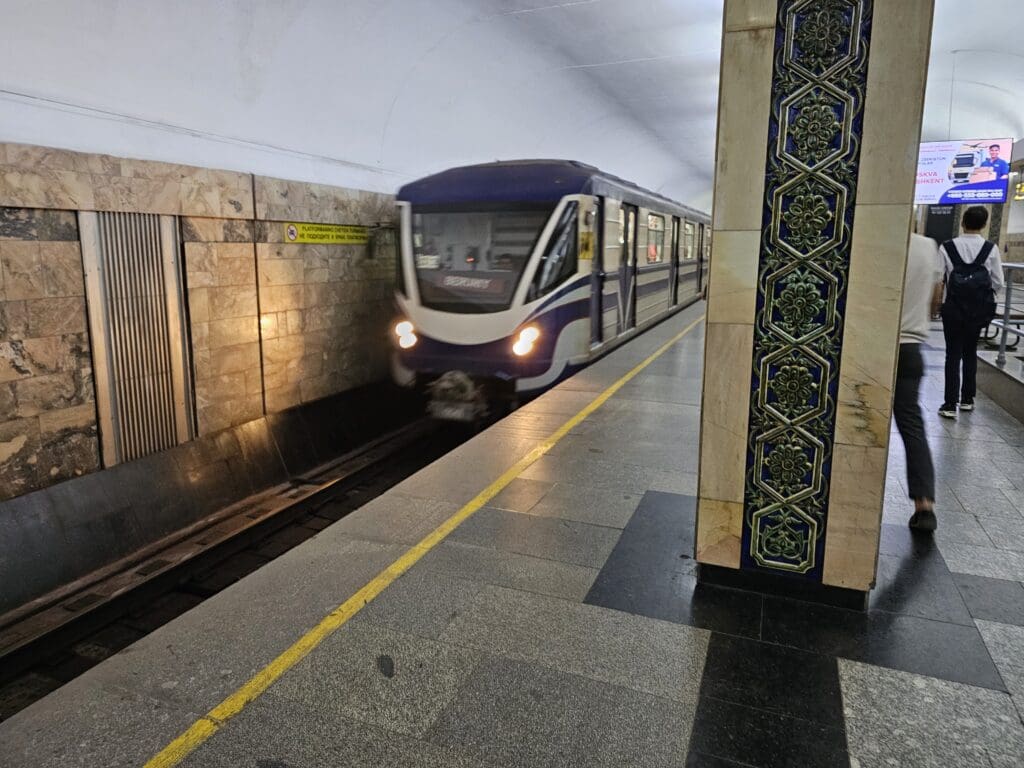


Paxtakor
Located on the Chilonzor Line, Paxtakor Station opened in 1977 and pays tribute to Uzbekistan’s cotton industry. Inside, mosaics depicting blooming cotton plants and white marble pillars celebrate this important industry. It’s a simple yet elegant reminder of the region’s agricultural roots.
